In the second part of our blog post exploring the Sa’adabad Palace Complex in Tehran, we delve deeper into the rich history and cultural significance of this magnificent palace complex. From the Niyavaran Palace to the White Palace, we uncover the stories of the Iranian royalty who once called these palatial residences home. Additionally, we’ll take you on a tour through the lush gardens and exquisite architecture, showcasing the fusion of Persian and European design elements that make Saadabad Palace Complex a true gem of Iran’s heritage. Join us in Parsi Tours Iran Travel Agency as we continue to unravel the secrets and beauty of this extraordinary complex, inviting you to immerse yourself in its captivating charm.
Ahmad Shahi Palace: Awaiting Restoration
One of the oldest buildings in the complex, Ahmad Shahi Palace, constructed during the Qajar era, is currently undergoing restoration and remains closed to the public.
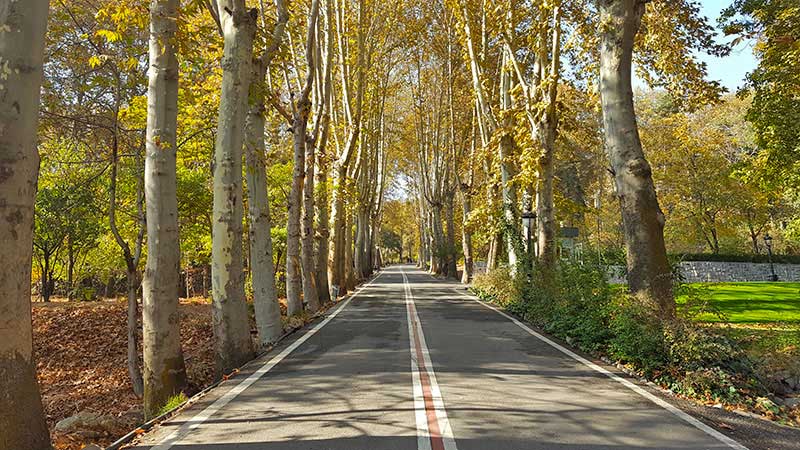
Shahvand Palace: A Regal Abode
Shahvand Palace, also known as the Green Palace, once served as Reza Khan’s Ministry of War and underwent completion during Reza Shah’s reign. It boasts opulent historical items, including furniture, chinaware, silverware, and carpets.
The Majesty of the White Palace
The White Palace or White House, the largest palace in the Saadabad complex, served as Mohammad Reza Shah Pahlavi’s summer residence and administrative hub. It features large paintings by Master Hossein Behzad and is adorned with Iranian carpets, historical pottery, crystal, chandeliers, and Marie Antoinette’s desk.
Private Palace of Saadabad: Presidential Custody
Formerly housing the Natural History Museum, this palace now serves presidential purposes and is located in the west of the Museum of Fine Arts.
The Black Palace: An Art Museum
Situated at the southern end of Sadabad, the Black Palace derives its name from its black marble exterior. It formerly served as the residence of the court minister and has been transformed into the Museum of Fine Arts.
Shams Palace: Museum of Anthropology and Royal Clothing
Once the residence of Shams Pahlavi, Shams Palace now houses a comprehensive Museum of Human Evolution. Additionally, Farah Diba’s royal clothing collection is on display in the Royal Clothing Museum.
Ashraf Palace: Showcasing Royal Dishes
Ashraf Pahlavi Palace, in the east of Saadabad, currently functions as a museum dedicated to royal dishes. It features an array of Pahlavi and Qajar-era dishes and items gifted to Mohammad Reza Shah and Farah Pahlavi from around the world.
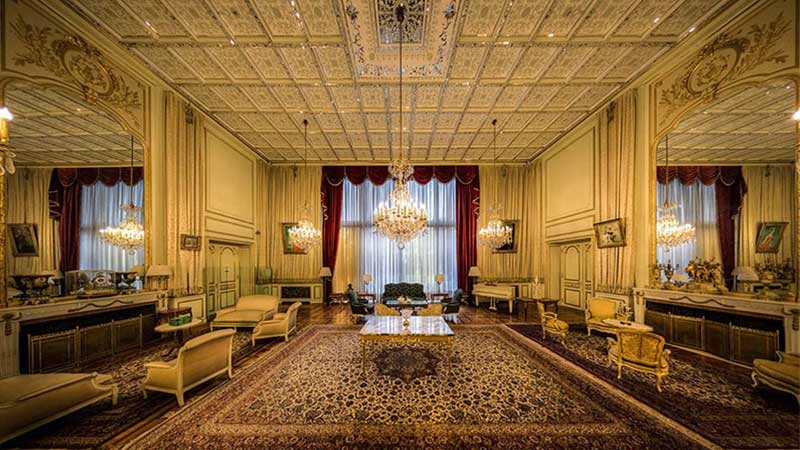
Palace of the Queen Mother: Now the President’s Building
This palace was once the residence of Taj Al-Muluk, Reza Khan’s mother, and during the later years of Reza Shah Pahlavi’s reign, it served as his residence. It is now utilized by the presidential institution and is known as the President’s Building.
Bahman Palace: Now the Complex’s Management Hub
Built during Mohammad Reza Shah’s reign, Bahman Palace is currently used as the administrative hub of the Saadabad complex.
These architectural gems within the Saadabad complex bear witness to a rich history and represent the intersection of culture, art, and politics during the Pahlavi era.
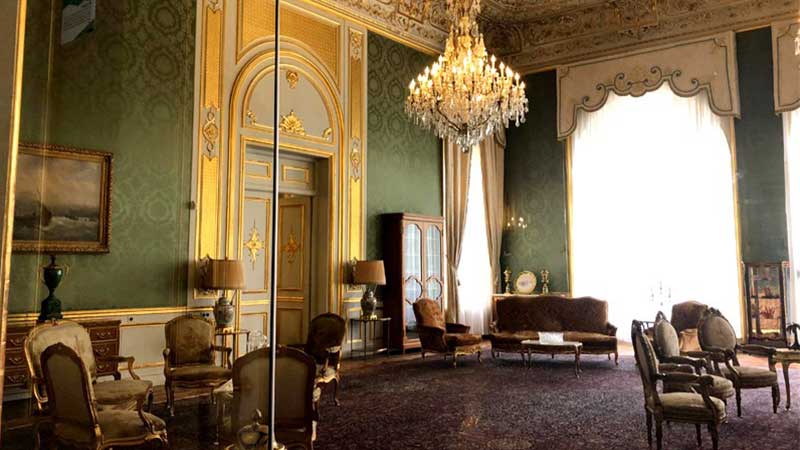
Shahram Palace: From Residence to Military Museum
Originally commissioned by Reza Shah Pahlavi for his second wife, Taj al-Muluk, Shahram Palace underwent renovations in 1351-1352. It was later handed over to Shahram, Ashraf Pahlavi’s son, and is now home to the Military Museum, offering a glimpse into Iran’s military history.
Palace of Queen Esmat Dolatshahi: Home to Master Farshchian’s Art
Located at the heart of Saadabad Complex, this palace once belonged to Reza Shah Pahlavi’s fourth wife, Esmat Dolatshahi. Today, it showcases the masterpieces of Iran’s miniature painting virtuoso, Master Farshchian, in the Master Farshchian Museum.
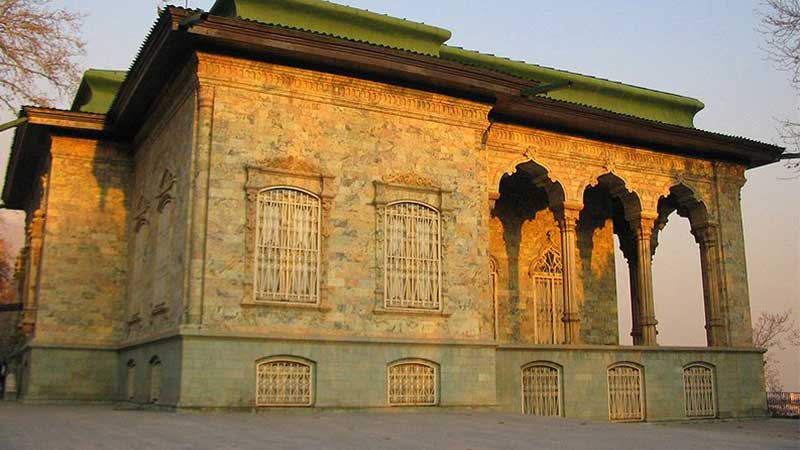
The Old Palace of the Crown Prince: Ostad Behzad’s Miniature Museum
Initially serving as Reza Shah Pahlavi’s workplace and residence, this palace found new life as the Ostad Behzad Museum in 1373. Ostad Behzad’s remarkable miniatures are displayed here, alongside various paintings and artworks.
Farhanaz and Alireza Palace: Mir Emad Calligraphy Museum
Once the residence of Farhanaz and Alireza Pahlavi, children of Mohammad Reza Shah and Farah Diba, this palace transformed into the Mir Emad Calligraphy Museum after the revolution. It is a testament to Iran’s rich calligraphic tradition.
Farah Pahlavi Palace: Negarestan Museum
With its striking architecture, this palace, located at the northernmost point of Saadabad Complex, hosts exhibitions ranging from traditional clothing to oil and acrylic canvas paintings. It has earned the name Negarestan Museum.
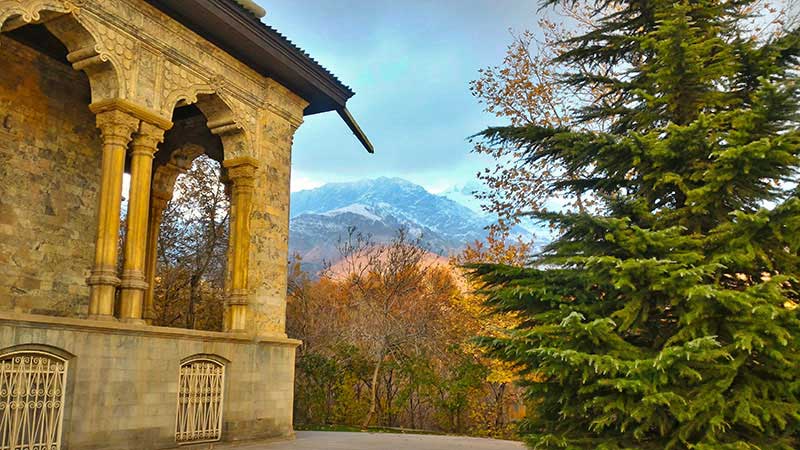
Palace of Queen Turan Amir Soleimani: Museum of Lasting Faces
Originally from the Qajar era, this palace was revamped by Reza Khan and later served as Queen Esmat’s residence. Today, it houses the Museum of Lasting Faces, showcasing statues of Iranian luminaries and scientists.
Leila Pahlavi Palace (Ostad Abkar Miniature Museum)
The last palace constructed in the complex, Leila Palace is home to the Ostad Abkar Miniature Museum, showcasing a variety of paintings and artworks by Master Abkar.
Omidvar Brothers Museum: A Tribute to Pioneering Travelers
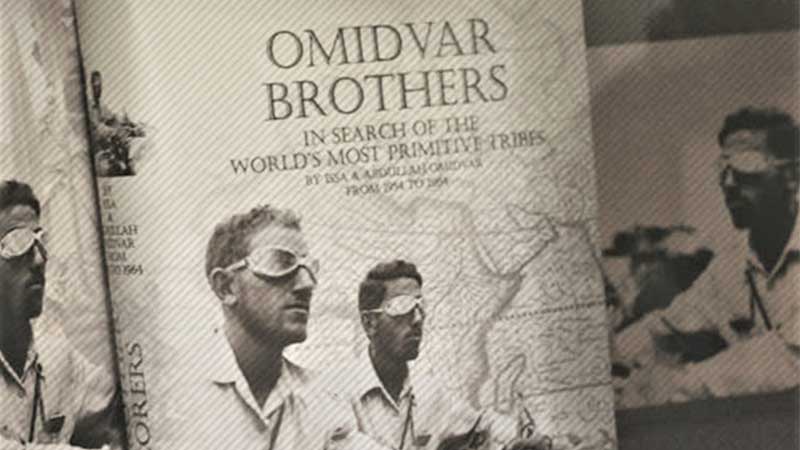
Omidvar Brothers: In search of the World most primitive tribes
This museum preserves the historical achievements of the Omidvar brothers, who embarked on a world tour in 1333. It offers a fascinating look at their travels and is open to the public free of charge.
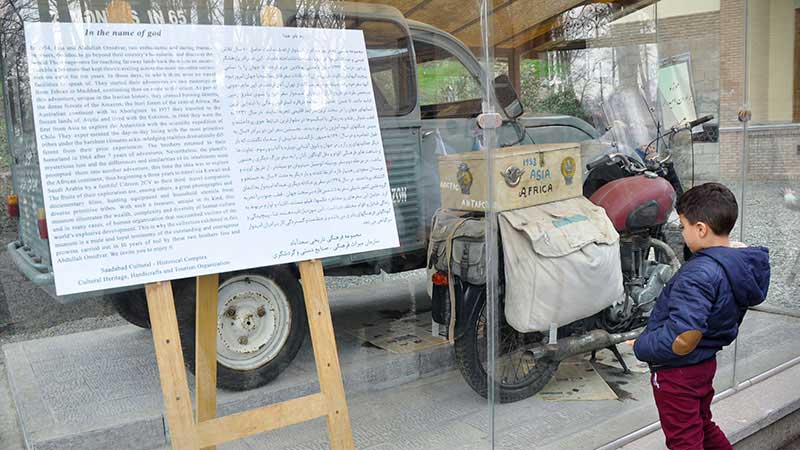
Omidvar brothers museum
Water Museum: From Office to Aquatic Heritage
Formerly Mohammad Reza Pahlavi’s office and later Timsar Kasraei’s ceremonial office, this building is now known as the Water Museum. It houses documents, tools, and statues related to water science.
Other Museums and Palaces in Saadabad Complex
Apart from the aforementioned museums, Saadabad Complex is home to various other intriguing attractions. These include the Museum of Albums and Royal Documents in the Royal Guard Building, the Royal Kitchen Museum, the Royal Car Museum, Abdolreza Pahlavi Palace, Gholamreza Pahlavi Palace, and the new palace of Crown Prince Reza Pahlavi. These structures serve administrative purposes or have been repurposed for the presidential institution.
The Rich Landscape of Saadabad Complex
Beyond its museums and palaces, Saadabad Complex boasts lush greenery and serene landscapes. Tall plane trees adorn the area, creating a picturesque setting. The complex is particularly enchanting in autumn when the trees don vibrant hues.
Access to Saadabad Palace
Saadabad Complex is situated in the northern part of Tehran, nestled in the foothills of the Alborz Mountains. It is easily accessible by public transport, with several bus lines and a metro line connecting to Tajrish Square. From there, a short taxi ride will take you to the complex.

Visiting Saadabad Palace
Visiting hours at Saadabad Complex vary depending on the time of year. During the first six months, it is open from 9:00 AM to 7:00 PM, and during the second six months, it is open from 8:00 AM to 5:00 PM. The entrance fee for domestic tourists is 5000 Tomans, with additional fees for entry to specific sections.
Additional Features of Saadabad Complex
Saadabad Complex also features a range of facilities and amenities. There are cinema halls, tennis courts, and various administrative and utility departments. The Eyvan-e Attar Saadabad amphitheater hall is a beautiful outdoor venue for music concerts and theater performances.
The Saadabad library, located in the north of Saadabad Palace, boasts an extensive collection of books on various subjects. A restoration workshop has also been established to preserve the complex’s historical assets.
Exploring the Aqueducts of Saadabad Palace
Saadabad Palace complex is dotted with aqueducts that were originally created to irrigate the gardens. These aqueducts include Harash Abad, Qawam al-Dawla, the Stone Palace, Jafar Abad, Ab Nama, the White Palace, Javadiya, the Greenhouse, Shams Palace, Khabgah, and two aqueducts in the special office of the palace.
Gates of Saadabad Palace
To regulate access to the vast complex, several gates were installed. Currently, only the Zafaranieh Street and Darband Street gates are accessible to tourists. The list of gates includes Nizamieh Gate, Saffron Gate, Darband Street Gate, Darband Square Gate, two gates of Jafar Abad, and the River Gate.
Saadabad Complex: A Natural Haven
Saadabad Palace complex is not only renowned for its historical sites but also for its beautiful natural surroundings. The sprawling gardens are adorned with tall plane trees and other diverse plant species, making it a perfect spot for leisurely walks and relaxation. In the autumn season, the variety of colors adds to its allure.
Photographers make frequent visits to the complex throughout the year, capturing its beauty in various seasons. The climate in the Shemiran region and Saadabad complex is particularly pleasant during autumn, drawing tourists to explore this stunning location.
Frequently Asked Questions
Where is Saadabad Palace?
Saadabad Palace is located in the northern part of Tehran, in the Shemiranat area, nestled in the southern foothills of the Alborz Mountains.
What are the visiting hours of Saadabad Palace?
The visiting hours for Saadabad Complex are from 9:00 AM to 7:00 PM during the first six months of the year and from 8:00 AM to 5:00 PM during the second six months.
How much does Saadabad Palace ticket cost?
The entrance fee for Saadabad Complex is 5000 Tomans (10 cents) for domestic tourists, and roughly 1$ for foreign tourists with additional fees for entry to specific sections.
How to go to Saadabad Palace by public transport?
Several bus lines and a metro line connect to Tajrish Square, from where you can take a taxi to Saadabad Palace for easy access to the complex.



